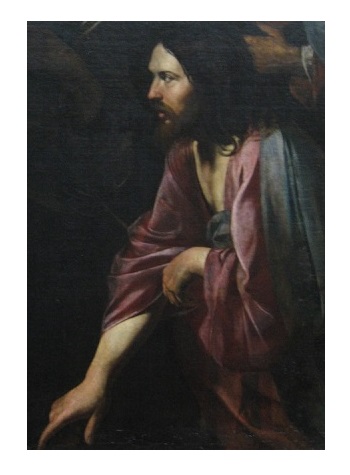Who Would Jesus Shun?
April 5, 2015
Please glance at this painting and guess its era and the identity of the man.

It was painted in the early 1600s by Valentin de Boulogne, a French painter who spent most of his career in Rome and who was greatly influenced by Caravaggio's dramatic compositions and use of light.
The man is Jesus, and the painting depicts the critical moment of one of my favorite stories of the Bible, John 8:7 -- So when they continued asking him, he lifted up himself, and said unto them, "He that is without sin among you, let him first cast a stone at her."
The artist portrays Jesus as he "bent down and wrote with his finger on the ground." The scribes had brought an adulteress to Jesus as a test, or more correctly, as a trap, hoping his answer would enable them to bring some charge against him.
The artist presents Jesus as a human facing a difficult challenge; his expression is one of uncertainty and perhaps hesitation as he grasps the complex situation. I was immediately transfixed by this painting for reasons that transcend faith; one need not be a Christian or even a theist to understand how different this Jesus is from the thousands of other portrayals of Christ as a child or Savior. Here is first and foremost a human being, beset by human emotions.
The narrative and iconography of this painting were very different from the typical portrayals of Jesus, and they open up a wide range of potential responses and levels of understanding in the viewer.
Of particular interest is the artist's selection of the moment before Jesus rises and delivers his devastating takedown of the hypocritical moralists, the moment of extreme tension and precariousness. This is a very human moment we can all relate to on some level.
Imagine the scene as Jesus tells the adulteress, "Neither do I condemn you; go, and do not sin again." The mob has vanished, dispersed by the truth of Jesus' words.
The Church at various times emphasized or encouraged depictions of specific narratives and iconic moments in the Bible to shape the beliefs of those seeing the artworks, and those portrayals that strayed from the party line, so to speak, were kept private rather than displayed in chapels.
In the secular world, we must always be alert to just this sort of shaping of our belief structure by the careful reinforcement of carefully selected narratives and iconography.
Who would Jesus shun? Who would he refuse to serve? The answer is here: "He that is without sin among you, let him first cast a stone at her."
Those claiming the freedom to shun based on faith may have some religion, but it certainly isn't Christianity.
NOTE: Contributions/subscriptions are acknowledged in the order received. Your name and email remain confidential and will not be given to any other individual, company or agency.
|
Thank you, generous subscribers and contributors to this site-- I am greatly honored by your steadfast support and readership. |